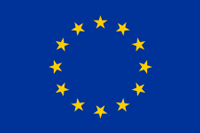On the 2023 wildfire season in the EU
The present text is a joint statement by the Steering Committee of FirEUrisk

The growing threat of wildfires aggravated by climate change and the urgent need for action to mitigate their impact are highlighted by the wildfires of 2023 in Canada. Similar scenarios have unfolded in Europe in recent years, for example in Portugal in 2017 and Greece in 2018 and 2021. The year 2022 was the second worst year in Europe in terms of burnt areas and the number of fires since 2006, according to the European Forest Fire Information System (EFFIS), with more than 830 000 ha of land across Europe. These wildfires cost the EU 2.5 billion euros in economic damage and had immeasurable costs in terms of human lives.
The aggressive wildfire management policies in the past, as well as rural depopulation and afforestation in some regions, contributed to accumulating large amounts of forest biomass that are now burning massively, leading to large, intense, and high-impact uncontrollable fires when fire weather becomes critical.
Since early June, the European Fire Weather Outlook anticipated high to regionally high fire danger in several E.U. Central and Northern regions for the current year of 2023. With such conditions, preparedness, and action are necessary to prevent and mitigate the impact of wildfires. Thus the E.C. has doubled the rescEU firefighting fleet for the summer of 2023. However, beyond the preparedness and response measures, there is a need for a holistic approach to landscape fire management that considers the resilience and sustainability of the EU landscape.
The FirEUrisk project aims to mitigate mega-fires risk and reduce their environmental and societal impacts by shifting policies from the often-conflicting approaches focusing either on prevention or suppression to an integrated wildfire management. This also requires a holistic approach to landscape fire management. The accumulation of fuel in “well-protected” forests in the EU, combined with climate change and the lack of efficient mapping and characterization of forest fuels, contribute to the challenge of inappropriate fuel management programs. FirEUrisk provides fuel mapping techniques, maps fuel at the European scale to be integrated into the EFFIS services, and identifies areas and regions where nature-based solutions for fuel management, including grazing and prescribed burning, could be considered to reduce undesired ignitions and mitigate fire behaviour. In addition, the project models social and ecological vulnerability to wildfires, thus making fire risk assessment, mitigation and adaptation more comprehensive and reliable.
The exceptionally dry conditions experienced at the beginning of this year in Canada led to devastating wildfires that affected the environment, economy, and public health of North American populations and also impacted Scandinavia and the Arctic Ocean due to long-range transport of emissions. The impact of wildfire-generated smoke plumes on health is one of the research areas the FirEUrisk project investigates. In addition, the forest fuel types map produced within FirEUrisk can contribute to estimating large-scale smoke emissions in case of very large fires. It is recognized that the health problems caused by exposure to smoke are responsible for premature losses of lives that exceed by far those caused in general directly by the fire.
Large wildfires in Europe are analyzed consistently by the FirEUrisk consortium in cooperation with the EC/JRC to allow the EC services to capitalize on the scientific analysis of relevant fire data. Thus, coordinated use of the outcomes of European R&D projects, like FirEUrisk, can greatly enhance preparedness and efficient adaptation to the new conditions brought by climate change. The results of this investigation can also provide scientific support in the management of wildfires in Europe.
